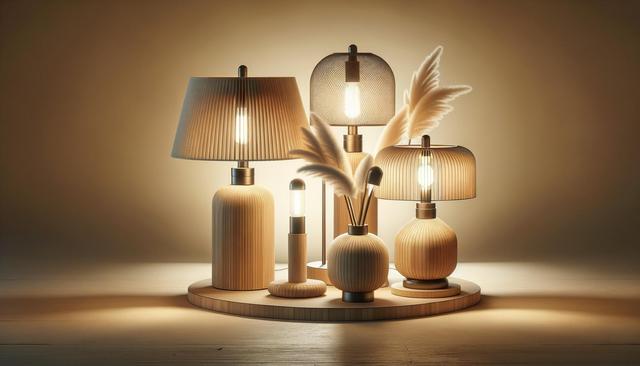Defining Modern and Contemporary Table Lamps
Modern and contemporary table lamps often get grouped together, but they carry distinct characteristics. Modern design typically refers to a specific style movement that emerged in the mid-20th century, emphasizing minimalism, clean lines, and industrial materials. Contemporary design, on the other hand, reflects current trends and often incorporates a wider variety of styles and influences. Both types of table lamps prioritize simplicity and form, but contemporary pieces may showcase more experimental or eclectic features. Understanding these differences can help in selecting the right lamp to suit your interior theme.
These lamps are more than just lighting solutions; they serve as artistic accents that complement the overall aesthetic of a space. Common materials include metal, glass, ceramic, and wood, often combined in innovative ways. Shades tend to be angular or cylindrical, aligning with the clean geometry that defines these styles. The result is a lighting fixture that is as visually appealing as it is functional.
Design Elements That Set Them Apart
What makes modern and contemporary table lamps stand out is their focus on design integrity and visual balance. Rather than being ornate or overly decorative, these lamps rely on subtle details and quality construction to make an impact. Here are a few defining design elements:
- Sleek silhouettes and geometric shapes
- Neutral or monochromatic color schemes
- Use of innovative materials like brushed steel or frosted glass
- Minimalistic hardware and touch-sensitive controls
While traditional lamps might feature elaborate bases or fabric shades, modern and contemporary lamps often lean toward simplicity. This makes them ideal for minimalist interiors, open-concept spaces, and even home offices where a streamlined look is desired.
Choosing the Right Lamp for Your Space
Selecting the right table lamp involves more than just picking a style you like. Consider the function it will serve, such as reading, ambient lighting, or accent lighting. Modern and contemporary table lamps often come with adjustable brightness levels, USB ports, or smart technology compatibility, making them versatile additions to any room.
Placement is also key. A lamp that’s too tall or too short for your table can throw off the visual balance. As a general rule, the bottom of the lampshade should be at eye level when seated. This ensures both comfort and effective light distribution. A few practical placement tips include:
- Use matching lamps on bedside tables for symmetry
- Place a bold, sculptural lamp on a console table as a focal point
- Choose compact designs for small desks or shelves
By tailoring your choice to the room’s purpose and layout, you ensure both aesthetic appeal and functional value.
Materials and Finishes That Complement Modern Decor
The materials and finishes used in modern and contemporary table lamps are carefully selected to harmonize with modern interiors. Matte black, chrome, brushed nickel, and natural wood finishes are common choices. These finishes pair well with modern furniture and décor, which often feature sleek surfaces and minimal ornamentation.
Glass is frequently used in contemporary designs, whether as a base or a shade. Frosted or smoked glass adds a sophisticated touch, while transparent options can create a sense of lightness. Metal bases in polished or satin finishes contribute to a refined look, and ceramic bases can offer a soft contrast with textured surfaces.
Here’s a quick guide to popular modern lamp materials:
- Metal: Durable and sleek, often used in both base and accents
- Glass: Offers translucency and elegance
- Wood: Adds warmth and natural texture
- Ceramic: Provides a tactile surface and color variety
Choosing the right combination of materials can subtly elevate your interior while maintaining a contemporary feel.
Integrating Table Lamps into Your Decor Scheme
One of the strengths of modern and contemporary table lamps is their adaptability. Whether your home leans toward industrial, Scandinavian, coastal, or eclectic design, there’s likely a lamp style that fits seamlessly. The key is to view the lamp not just as a lighting tool, but as part of the room’s overall design language.
For instance, in a minimalist room with a neutral color palette, a lamp with a bold shape or unexpected material can serve as a striking focal point. In contrast, a more eclectic room may benefit from a lamp that echoes other elements in the space, such as color accents or material finishes.
Here are a few ideas for integrating modern and contemporary table lamps into your home:
- Match lamp finishes with existing hardware like door handles or cabinet pulls
- Choose a lamp base that reflects textures found in nearby furniture
- Use lighting to introduce subtle contrast—e.g., a matte black lamp in a white-toned room
Thoughtfully chosen, a table lamp can enhance your decor while offering practical lighting solutions.







